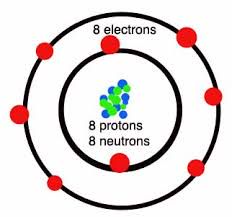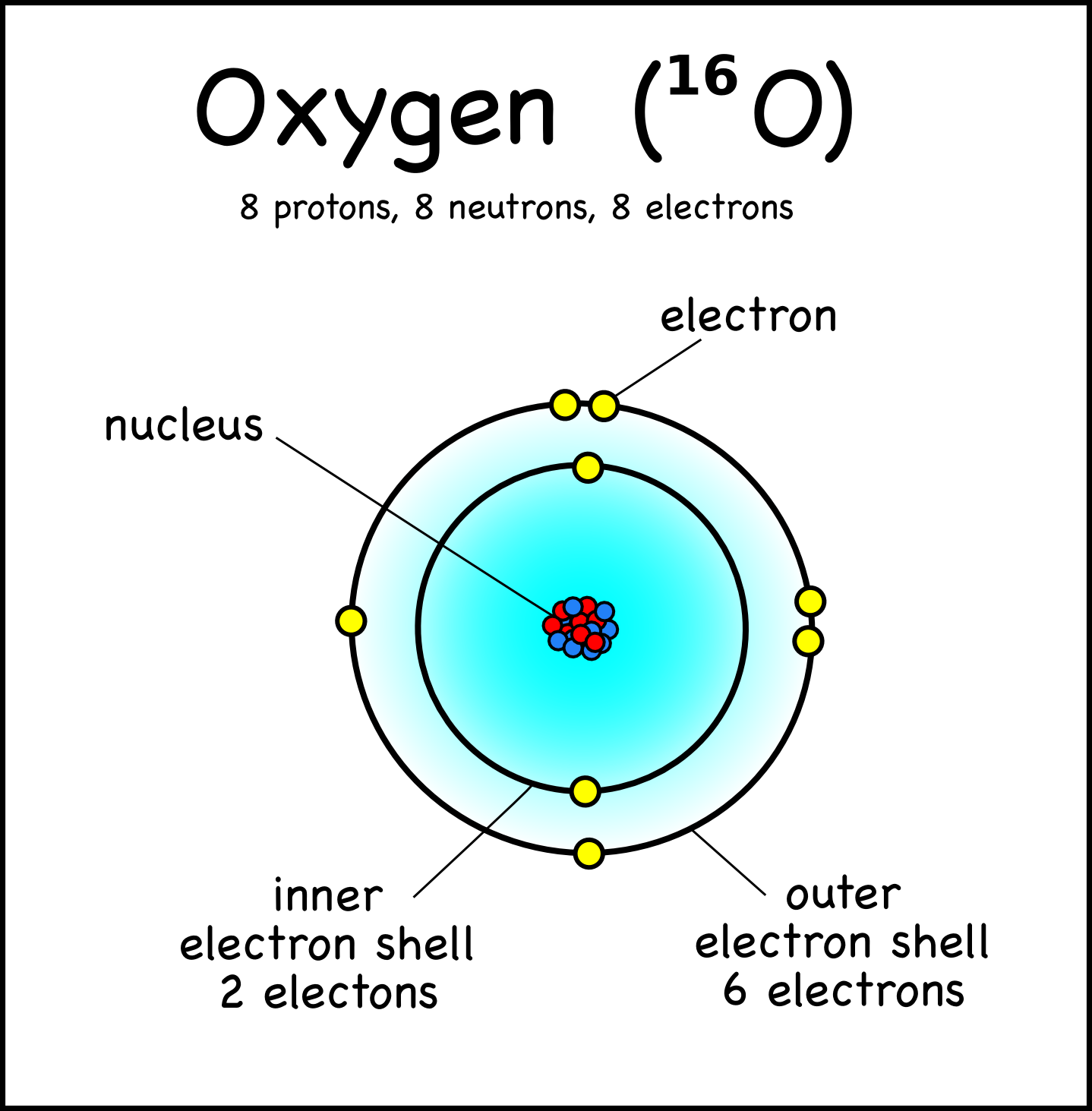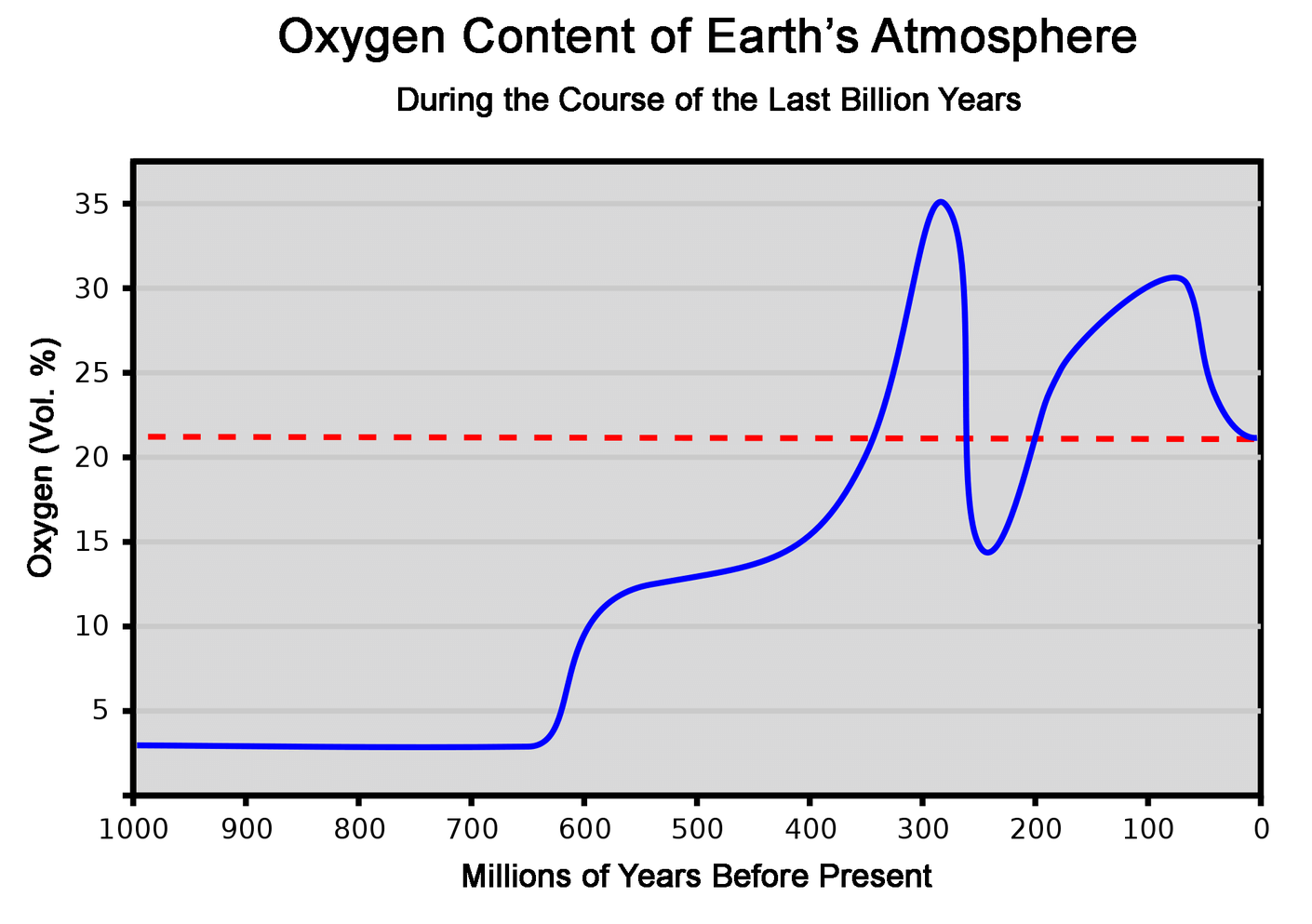Oxygen
Oxygen
Most of us never think about oxygen because it's always there and we breathe it all the days of our lives. Oxygen is the most abundant chemical element by mass on Earth, but oxygen is not the most common element in the universe. That's because hydrogen has that honor. Oxygen gas does not exist in a planet's atmosphere unless there is a biological cause for its existence. In other words, Oxygen gas in a planet's atmosphere is a sign of life. The reason for this is that photosynthesis creates oxygen from Carbon dioxide and water, and photosynthesis is the main biological function of plants.


The element Oxygen has an atomic number of 8. Oxygen gas is diatomic, consisting of two oxygen atoms connected by a covalent bond. Oxygen-16 is the most common isotope. Oxygen freezes into a solid at 54.36 degrees K, which is -218.79 F. This is typical of gases. Oxygen makes up 21% of the Earth's atmosphere. Oxygen tied up with other elements, makes up a large part of the Earth's crust and surface rocks. A large amount of Oxygen is tied up as water in Earth's oceans.
Oxygen is created in stars by the nuclear fusion of carbon-12 and helium-4 nuclei.

What's important about oxygen is that it's absolutely necessary for animals, and us, to breathe. Without it we would suffocate. We can thank photosynthesis-based (Cyanobacteria) organisms for creating it in Earth's atmosphere some 2.4 billion years ago. This sudden build up of oxygen in the atmosphere of an Early Earth caused the extinction of anaerobes, which didn't need oxygen and became extinct.

Right after the Great Oxidation Event 2.4 billion years ago, the level of Oxygen in the atmosphere may have been much higher than what we have today. There is evidence that the level of Oxygen crashed after that time and then slowly rose to allow the diversity of life we find today. The simplest animals appeared only 600 million years ago. There is evidence of some species of worms and sponges, species that existed billions of years ago, can survive in very low levels of Oxygen. High levels of Oxygen could explain why the dinosaurs grew so large.

One of the most serious problems with oxygen is that it has a total of eight electrons, two of which orbit the nucleus' inner shell and six that orbit in the outermost shell. Since the outer shell of Oxygen can hold eight electrons, it makes Oxygen very reactive, meaning it can react with all sorts of other elements, sometimes violently. In other words, it's a fire hazard.

Strangely enough, the amount of Oxygen in our atmosphere is just right. Too little and we die; too little could cause edema, which could also cause death. Too much oxygen would make everything incendiary. Fortunately, the Oxygen in our atmosphere has remained relatively stable. Thank God!
Thanks for reading.
Bạn đang đọc truyện trên: Truyen247.Pro